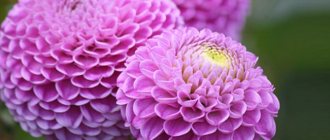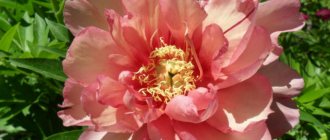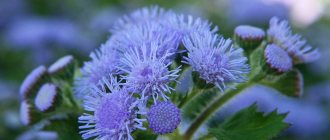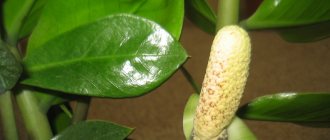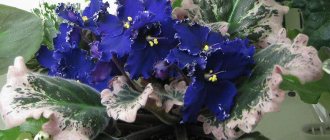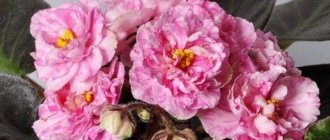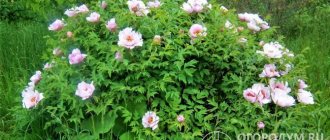Summer residents and owners of private houses love to grow peonies in their garden plots. They are fabulously beautiful and easy to care for. Thanks to the diversity of species, you can create beautiful color combinations in flower beds.
With the correct selection of planting material, you can admire flowering plants for a long period. Breeders have developed many varieties of peonies, but some of them are especially popular and loved by flower growers.
What types of peonies are there?
Visual diagram of peony varieties
Peonies are classified according to the structure of the flower:
Terry - Bowl of Cream, Henry Boxtos, Duchess de Nemours, Kansas, Red Spider, Red Charm, Rosella, Sarah Bernard.
Bowl of Cream
Kansas
Red Spider
Red Charm
Rosella
Non-double - Charles Burgess, Neon, Rashumon, Isani Gidui, Waikiki, Cora Stubs, Kukeni Jishi.
Charles Burges
Neon
Waikiki
Cora Stubs
Kukeni Jishi
Semi-double - Miss America, Cytheria, Ann Bury Cousins, Lasters, Sable.
Miss America
Cytheria
Anne Bury Cousins
Sable
Grassy
A perennial that grows wild in the Northern Hemisphere. In Russia you can find 15 species of peony, which live in the Caucasus and the Far East.
The herbaceous peony forms a lush bush, from 50 to 100 cm in height. The stems of the plant die off every autumn to grow again in the spring. Powerful roots accumulate nutrients, which help the plant survive the winter.
- Peony foliage has a complex palmate structure and is light green in color.
- The flowers are large, up to 15 cm in diameter. There are simple, semi-double and double varieties of peony.
- Some varieties are endowed with a rich aroma, and there are varieties that are excellent for cutting.
- The shades of the petals are varied: white, pink, scarlet, burgundy, crimson, two-color.
Popular varieties
Sarah Bernard, the oldest variety with a strong aroma.
Iceberg (USSR) - a snow-white terry variety.
Festava Maxima is a large-flowered, fragrant variety with snow-white flowers interspersed with crimson.
Also: Ama-no-Sodi, Amabilis, Angelo Cobb Freeborn, Ballerina, Baroness Schroeder.
After flowering, large seeds ripen on the stems.
Features of planting and care
The perennial is planted in sunny, wind-protected areas with fertile loamy soil. The location should be chosen carefully, since the peony does not like transplantation and can grow in one place for up to 50 years.
Caring for the plant consists of regular watering and fertilizing during the flowering period, and loosening the soil. Peduncles with heavy buds should be tied to supports so that they do not lean toward the ground. Faded buds are removed so as not to weaken the plant by seed ripening.
For the winter, peony bushes are covered with peat or sawdust to a height of 15 cm.
tree-like
A Chinese species of semi-shrub peony, numbering about 500 varieties. Forms a bush, up to 150 cm high, with large leaves falling off in the winter. The flowers are simple, semi-double or double, very large - up to 25 cm in diameter.
It has all the same shades of petals as the herbaceous one. Tree peony can produce yellow flowers.
In our country, tree peony is not cultivated as widely as herbaceous peony. The reason for this is low winter hardiness and difficulty in care.
However, 17 varieties of tree peonies have been bred in Russia, which feel good even in the conditions of the Urals and Siberia!
Varieties suitable for cultivation
Hoffman is a pink semi-double winter-hardy variety.
Kuindzhi is a yellow non-double variety.
Also: Kiao Sisters, Sapphire, Coral Altar, Green Jade.
Features of planting and care
The perennial is planted in sunny areas, protected from the wind. It is better to do this in the spring so that the plant has time to take root before the onset of cold weather. Peony soil is prepared from a mixture of peat, humus and sand, saturating it with phosphorus-potassium fertilizers. No manure is used!
During the summer season, the plant is regularly watered, the soil is loosened and fed. In autumn, the bushes are mulched with sawdust or fallen leaves, and the crown is wrapped with lutrasil or darnit.
Once every few years, in the spring, the bush is trimmed, removing excess and damaged branches.
Ito peonies
A hybrid obtained by a Japanese florist by crossing a tree and herbaceous peony. The above-ground part of the plant is herbaceous and dies off in winter, saving the gardener from the work of insulating the flower.
The size and color of the flowers are the same as those of the tree-like parent. Thus, the Ito hybrid combines the unpretentiousness of a herbaceous peony and the beauty of a tree peony.
Ito peonies have the same requirements for growing conditions as herbaceous peonies:
- soil – fertile and loose loam;
- a wind-free and sunny place in the flower garden;
- regular watering and fertilizing during the active growing season.
The perennial is planted in the spring, but active foliage growth begins or at the end of summer. The bush is placed in planting holes without deepening the root collar.
Varieties
Barzella (USA) – lemon terry variety.
Dark Eyes (USA) - a simple large flower of a dark purple hue.
Fest Arrival is a soft lilac, non-double flower, 12 cm in diameter.
Features of feeding
Peony propagation
As soon as the snow melts, the soil around the young bush should be watered with a solution of potassium permanganate. Dissolve 1 g of potassium permanganate in a bucket of water and process.
In spring, the plant needs to gain foliage and begin to grow. Grown shoots are fed with ammonium nitrate, a solution of 15 g of chemicals per 10 liters of water. By mid-May you need to water the bush with mineral fertilizers. You should always feed in the evening or in cloudy weather. Always in moist soil. You also need to feed the peony with mineral fertilizers when the buds appear. How to prepare a mixture of minerals:
- 10 g superphosphate;
- 5 g potassium salt;
- 7 g of saltpeter.
Add the fertilizer mixture to a 10-liter bucket of water and water the soil around the bush.
Ammonium nitrate
The flower should also be fed with this composition of mineral fertilizers during flowering. When the peony has bloomed, you should stop feeding. Don't stop watering. Loosen the soil around the plant from time to time.
The soil
This plant grows in almost all types of soil, but it will develop differently.
- Leaves develop better on sandy soil than flowers.
- On clay soil you can get larger flowers, but growth will be slower.
The best option is loamy soils, drained, moisture-absorbing and with an acidity of 5.8 to 7.0.
Peonies are frost-resistant plant species.
Good predecessors - the best option would be green manure and black fallow or virgin soil.
Bad predecessors are shrubs, trees and large perennials, which significantly deplete the fertile layer of soil.
Diseases, pests and treatment
Peonies are very hardy and unpretentious plants. Indoor peonies practically do not get sick provided they are properly cared for - bright lighting, watering three times every ten days and a sand-based substrate.
Garden peonies are most often affected by fungal diseases such as gray mold, rust, phyllosticosis, powdery mildew, septoria, root rot and cladosporiosis. To prevent the occurrence of fungal infections in peonies, you should follow the rules of watering and treat places of cuts, breaks and any mechanical damage with tree resin or activated carbon.
If the first signs of fungal infection are noticed on a peony bush, then in order not to lose the bush and not infect neighboring plants, you should immediately begin treatment. Bushes affected by the fungus are treated with a fungicide, with the preliminary removal of all infected parts of the plant.
When growing peonies, you can also encounter viral infections. It will not be possible to cure the bush from them, so it will have to be completely uprooted and burned. The pit in which the peony was located must be disinfected.
Insects can also encroach on beautiful peony bushes. The main pests of this plant include: aphids, all types of nematodes, ants, bronze beetles and fine hop borers. You can get rid of insects by treating the bushes with insecticides. However, larvae can be deposited in the ground next to the peony bush, so the top layer of soil should be removed and the soil around the peony should be treated.
How to grow
If peonies are planted in August or early autumn, they are planted directly into the ground. To do this, prepare the planting site by digging and adding mineral fertilizers, adding lime to reduce acidity. Nitrogen, phosphorus and bone meal are best suited.
- Holes 50 cm wide, long and deep are prepared for the bushes. Fertilizers are added to the bottom - humus, superphosphate, ash, phosphorus flour and everything is thoroughly mixed with the soil.
- Water it well with manganese solution, make a small mound, install the bush so that the upper buds go no more than 5 cm into the ground and straighten the roots.
- Cover with soil, water and mulch.
Care consists of regular watering and mandatory loosening of the soil. Weeds should not be allowed to actively grow; they should be removed. When the bushes grow, they are given supports to support large buds. During the growth process, fertilizing is carried out; three are enough - in the spring and two in the summer.
The seedling method is used for planting seeds in winter in order to plant ready-made seedlings in the spring. At the initial stage, the seeds are sown in small containers with sand and placed on a heating pad. During the daytime, the temperature is maintained at about +30ºС, and at night +15ºС. Periodically, the sand is watered with a spray bottle.
After the roots appear, the seedlings are transplanted into a container with fertile soil or peat mixture. The temperature is maintained from +5ºС to +10ºС, and after the leaves appear about +19ºС. It is necessary to ensure regular watering. You can start diving after the first two leaves appear.
Watering the seedlings is done with a solution of mineral fertilizers. After diving, fertilizing is carried out a week later.
Planting, replanting, pruning and flowerbed care
Peonies should be planted in late summer - early autumn. The distance between each bush should be at least one meter. There is no need to compact the soil at the roots; it should be loose and undergo a natural shrinkage process. It is better to subsequently add a layer of soil so that depressions do not form around the bush.
The place where peonies grow needs to be weeded regularly. Weeds draw nutrients from the soil and proximity to them will prevent peonies from blooming.
If the plant needs to be replanted, this can be done at any time, but not during flowering. Transplantation is carried out only by transshipment while preserving the earthen clod.
There is no need to trim peony bushes; they have their original decorative shape and parameters. If flowers are grown for cutting, they must be carefully cut at an angle with pruning shears, leaving 2 centimeters from the new bud. Withered buds are simply removed by hand. Before the onset of cold weather, the base of the bush should be covered with moss or foliage.
Use in garden design
With their lush and bright blooms, peonies attract attention and are a bright accent of the garden composition. Bushes are planted in groups or individually:
- on the lawn;
- form an elongated flower bed along the path;
- planted in the front area, at the entrance to the house.
In mixed flower beds, the peony plays the main role; its neighbors can be plants with decorative foliage, conifers and flowers that bloom after the main soloist of the flowerbed, the peony, has bloomed.
What to plant next to is the best option when there is nothing nearby except grass or lawn. Depending on the color of the flower, you can place nearby - hellebores, barberries, ornamental greens, sage, daylily, poppy, bells, honeysuckle.
More examples of successful peony neighbors: cereals, geranium, white tansy, sedum, iris, delphinium, thuja, juniper.
Flowering time
White peonies have different flowering periods. Thanks to this, several varieties can be grown on the site. This means that when some buds fade, new ones will bloom. As a result, you can enjoy the sight of these beautiful plants all summer long.
There is a classification based on the time of bud blooming, which usually occurs in the first month of summer:
- spring, bloom until June 5;
- early, bloom from 5 to 10;
- mid-early, blooming from June 10 to June 15;
- average: from 15 to 20;
- medium-late, the buds of which bloom by June 20–25;
- late ones, begin to bloom from 25 to 30;
- very late, bloom after June 30.
Thus, with the right choice of varieties, you can achieve flowering throughout the summer.
Important. The buds bloom in 2 – 3 weeks. Therefore, it is necessary to select varieties based on the duration of flowering.
Reproduction methods
There are two ways to propagate peonies. However, not one of them allows flowering to occur within 3 to 5 years. These include:
- Use of seeds. It is necessary to collect them yourself and treat them from possible viruses and bacteria. After drying, they are placed in a paper bag. In autumn they are sprouted and planted in a pot. In spring, transplant into open ground.
- Dividing the bush. In this case, cut the root into two parts. It is important that both of them have buds. The cut is treated with activated carbon, after which the roots are placed in the ground and watered moderately.
Important. Damaged roots are restored within 1 – 2 years. Therefore, there is a possibility of either a complete absence of flowering, or it will be minimal. But after 3 – 5 years the plant will delight with large buds.
Thus, white peonies are often used by modern gardeners to decorate summer cottages. The flower is unpretentious, so it can be grown throughout Russia without any problems.

